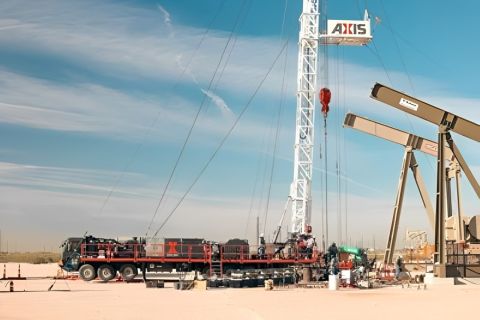Oil prices fell on Feb. 20 with an uncertain outlook for global demand knocking value off crude futures contracts, despite some risk premium from the Israel-Hamas conflict.
Brent futures Lfell $1.44 or 1.7% to $82.12/bbl by 11:27 a.m. EST (1627 GMT). The six-month spread for Brent on Feb. 20 was also at its highest since October, a sign of a tighter market.
U.S. West Texas Intermediate (WTI) crude for April delivery fell 70 cents, or 0.9%, to $78.49/bbl, after earlier paring $1. The March WTI contract gained 36 cents, or 0.45% to $79.55/bbl ahead of its expiry during the session.
There was no settlement for WTI on Feb. 19 due to a U.S. public holiday.
Crude markets were "marginally lower" in "quiet trading over the Presidents' Day holiday in the U.S. and as demand concerns offset ongoing Middle Eastern geopolitical tensions," IG market analyst Tony Sycamore said in a note.
Various countries are increasing efforts to secure a ceasefire between Israel and Hamas in Gaza as the threat of an Israeli assault on the city of Rafah looms. The U.N. has warned an assault "could lead to a slaughter."
Shipping has suffered as the conflict in the Middle East threatens to escalate, with energy markets particularly vulnerable. In support of Palestinians, Iran-aligned Houthis have increased attacks on shipping lanes in the Red Sea and Bab al-Mandab Strait, with at least four more vessels hit by drone and missile strikes since Feb. 16.
But the conflict in the Middle East, one of the world's major oil-producing regions, has not been enough to counter crude investors' worries about flagging global demand.
China announced its biggest ever reduction in the benchmark mortgage rate on Feb. 20, the largest since the reference rate was introduced in 2019 and far more than analysts had expected.
"The fact that the crude market hasn't responded more positively shows you the depths of the oil demand problems in China," said John Kilduff, partner at Again Capital LLC in New York.
A bearish International Energy Agency (IEA) report last week revised the 2024 oil demand growth forecast downward, to almost a million barrels a day less than producer group OPEC's outlook.
The IEA estimated global oil demand will grow by 1.22 MMbbl/d this year, while OPEC's growth forecast is 2.25 MMbbl/d.
The two are clashing in part over the shift to renewable and cleaner energy, with the IEA, which represents industrialized countries, predicting oil demand will peak by 2030 while OPEC expects oil use to keep rising for the next two decades.
Recommended Reading
StimStixx, Hunting Titan Partner on Well Perforation, Acidizing
2024-02-07 - The strategic partnership between StimStixx Technologies and Hunting Titan will increase well treatments and reduce costs, the companies said.
TGS, SLB to Conduct Engagement Phase 5 in GoM
2024-02-05 - TGS and SLB’s seventh program within the joint venture involves the acquisition of 157 Outer Continental Shelf blocks.
Forum Energy Signs MOU to Develop Electric ROV Thrusters
2024-03-13 - The electric thrusters for ROV systems will undergo extensive tests by Forum Energy Technologies and SAFEEN Survey & Subsea Services.
Axis Energy Deploys Fully Electric Well Service Rig
2024-03-13 - Axis Energy Services’ EPIC RIG has the ability to run on grid power for reduced emissions and increased fuel flexibility.
TotalEnergies Rolling Out Copilot for Microsoft 365
2024-02-27 - TotalEnergies’ rollout is part of the company’s digital transformation and is intended to help employees solve problems more efficiently.





